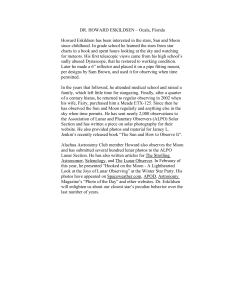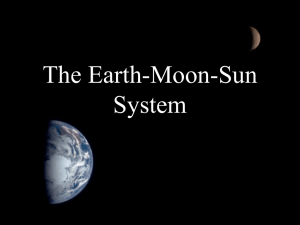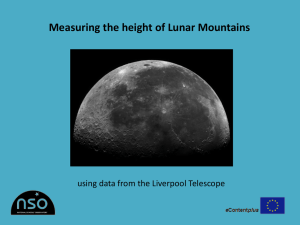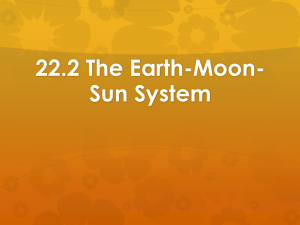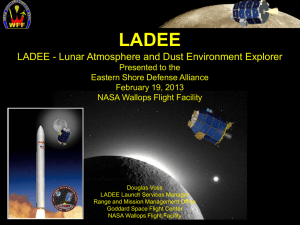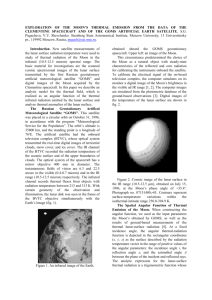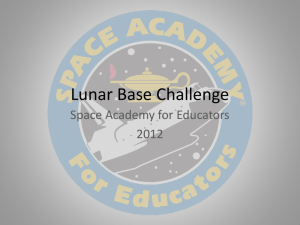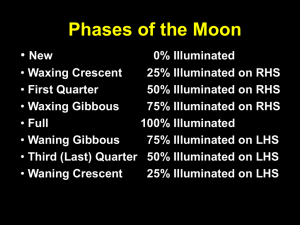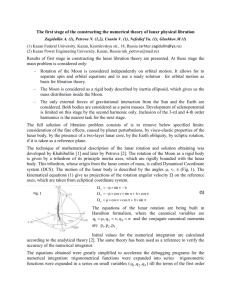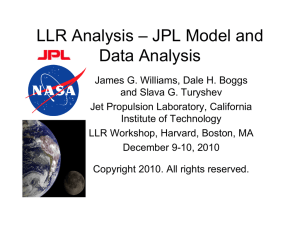Lunar Formation
advertisement
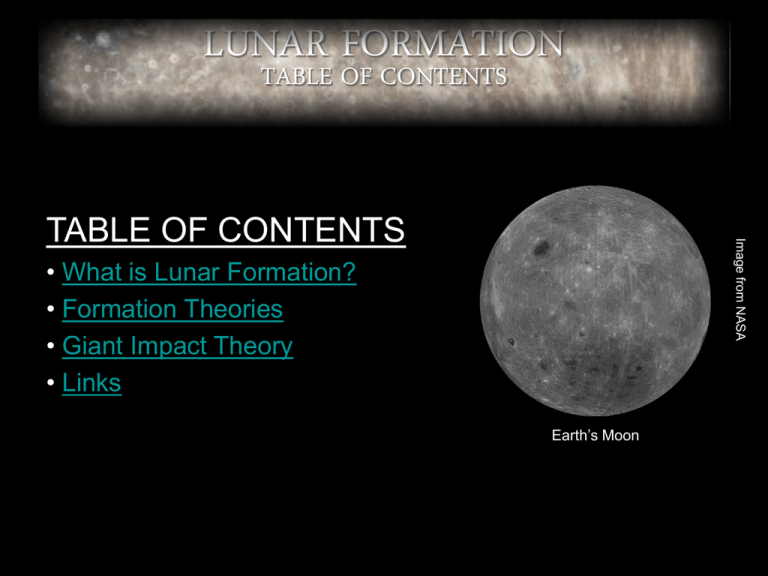
LUNAR FORMATION TABLE OF CONTENTS Image from NASA TABLE OF CONTENTS • What is Lunar Formation? • Formation Theories • Giant Impact Theory • Links Earth’s Moon LUNAR FORMATION WHAT IS LUNAR FORMATION? Image from NASA • Lunar formation is the process in which a moon is created. • There are several theories on how Earth’s moon was formed, but nobody is sure what really happened. Earth’s Moon from South Pole Back to Table of Contents LUNAR FORMATION FORMATION THEORIES Back to Table of Contents Image from NASA • There are four main theories of lunar formation: • Fission Theory: The moon was part of the Earth, but somehow broke off and became its own celestial body. • Capture Theory: The moon, which was formed elsewhere, traveled through Earth’s orbit and got caught in its gravity field. Earth’s Moon More Theories LUNAR FORMATION Image from NASA MORE FORMATION THEORIES Earth and its Moon Previous • Condensation Theory: Both the Earth and the moon formed at the same time in the same area. • Giant Impact Theory: The dominant theory in which a large celestial body slammed into the Earth. The moon was created out of the debris. Back to Table of Contents LUNAR FORMATION GIANT IMPACT THEORY • The Giant Impact Theory, also known as the “Big Whack,” is the dominant lunar formation theory. • In this theory, a Marssized “protoplanet” collided with Earth, releasing debris which eventually formed the moon. Back to Table of Contents Artist’s interpretation of the impact. More on Giant Impact Theory LUNAR FORMATION MORE GIANT IMPACT THEORY Previous Back to Table of Contents Image from ClassZone • At first, the theory was heavily criticized, but with the development of models and simulations, the theory became more widely accepted. • Since a collision on this scale is hard to model, computer simulations have been used to try to replicate the event. Screenshot from a Giant Impact simulation. Click the image to view the animation. Giant Impact Theory’s Issues LUNAR FORMATION Image from DTA GIANT IMPACT ISSUES Simulated image of the moon’s accretion. Previous • No simulation has yet been able to confirm the theory. Often in simulations, the Earth after collision is left spinning too fast or its mass is decreased by too much. • The theory does not explain the Moon’s lack of iron and siderophilic (ironliking) elements. Back to Table of Contents LUNAR FORMATION LINKS Back to Table of Contents Image from NASA • http://www.swri.org/3p ubs/ttoday/spring99/m oon.htm • http://www.classzone. com/books/earth_scie nce/terc/content/visual izations/es2501/es250 1page01.cfm?chapter _no=visualization False Color Image of the Moon
